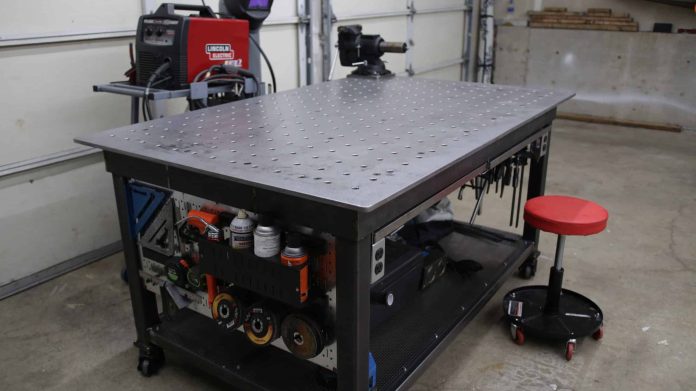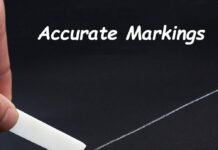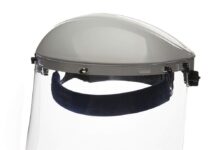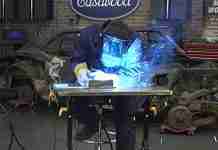Building a welding table may seem like a daunting task, but fear not, because we are here to guide you through it! In this article, we will discuss the essential tools you need to successfully construct a sturdy and reliable welding table. From measuring and cutting to welding and finishing, we’ve got you covered. So grab your safety gear and let’s get started on this exciting journey of building your very own welding table!
Measuring and Marking Tools
Tape Measure
A tape measure is an essential tool for accurate measurements in any fabrication project, including building a welding table. It allows us to measure distances, lengths, and widths with ease. The tape measure is typically made of a flexible metal strip with markings in both inches and centimeters. Look for a tape measure with a lock feature to ensure the accuracy of our measurements.
Square
When it comes to building a welding table, ensuring precise right angles is crucial. That’s where a square comes in handy. A square is a measuring and marking tool that allows us to check or mark 90-degree angles accurately. It typically consists of a metal ruler and a handle, forming an L-shape. A combination square, which can be adjusted for different angles, is particularly useful for versatile fabrication projects.
Chalk Line
A chalk line is a tool that helps us create straight and accurate lines over long distances. It consists of a string coated with chalk powder, stored in a container. By stretching the string tightly on the desired surface and snapping it, we create a straight chalk line that guides us during the welding table construction. Chalk lines are particularly useful when marking out large sheets of metal or laying out the frame of the table.
Cutting Tools
Angle Grinder
An angle grinder is a versatile power tool that aids in cutting and grinding various materials, including metal. Equipped with a rotating abrasive disc or cutting wheel, it allows us to make precise and clean cuts in metal sheets or remove unwanted material. When building a welding table, an angle grinder becomes essential for preparing and shaping metal components.
Plasma Cutter
For more intricate and precise cutting tasks, a plasma cutter is a valuable tool. It utilizes a high-temperature plasma arc to melt and cut through metal. Unlike traditional cutting tools, a plasma cutter provides cleaner cuts with minimal heat-affected zones. This makes it ideal for creating intricate patterns or cutting complex shapes in the metal pieces needed for our welding table.
Cutoff Saw
A cutoff saw, also known as a chop saw or metal cutting saw, is a power tool designed specifically for cutting metal. It is equipped with an abrasive or carbide-tipped blade that rotates at high speeds, allowing us to make clean and accurate cuts through metal pipes, bars, or solid metal pieces. A cutoff saw is particularly useful for cutting the metal frame components of our welding table with precision and efficiency.
Welding Equipment
Welding Machine
A welding machine, or welder, is the heart of any welding project. It is used to join metal pieces together by melting them and creating a strong bond. There are various types of welding machines, such as MIG (Metal Inert Gas), TIG (Tungsten Inert Gas), and stick welders. Depending on the complexity and requirements of our welding table, we may choose a specific welding machine that suits our needs.
Welding Helmet
Safety should always be a top priority in any welding project, and a welding helmet ensures our protection. It is designed to shield our face, eyes, and neck from harmful sparks, UV radiation, and debris generated during the welding process. Look for a welding helmet with an adjustable shade and comfortable headgear to ensure optimal visibility and comfort while building our welding table.
Welding Gloves
Handling hot metal and welding equipment can be dangerous without proper protection. Welding gloves are designed to provide heat resistance and dexterity, allowing us to manipulate metal pieces and welding tools safely. Look for welding gloves made from durable and heat-resistant materials, with a snug fit that ensures both protection and precise control during our welding table construction.
Clamping Tools
C-Clamps
C-clamps are versatile tools used to hold metal pieces securely in place during welding or fabrication. They consist of a fixed and a movable jaw, forming a C-shape. By tightening the threaded screw or bolt, we can firmly hold metal components together, ensuring accurate alignment while welding or bolting them. C-clamps are indispensable in welding table construction, as they help us maintain stability and prevent any movement during the welding process.
Locking Pliers
Locking pliers, also known as Vise-Grips, provide a convenient and secure grip on metal objects. They have a unique locking mechanism that allows us to clamp and hold onto a workpiece without applying continued pressure. Locking pliers come in various sizes and designs, including curved jaw and needle-nose options. They are beneficial during welding table construction when we need a strong and stable hold while cutting or welding metal components.
Welding Magnets
Welding magnets, also called magnetic angles or holders, are handy tools that provide a magnetic base for holding metal pieces securely in position. These magnets are particularly useful when assembling the frame of our welding table, as they enable us to align and hold the metal tubes or bars at right angles. Welding magnets come in different shapes and strengths, offering flexibility and stability during the welding process.

Grinding and Finishing Tools
Grinder
A grinder is a power tool that uses rotating abrasive discs or wheels to shape, smooth, or remove metal and other materials. It is especially useful when it comes to preparing the metal surface for welding or removing any excess material. A grinder can be equipped with various types of discs or wheels, such as grinding wheels for shaping or cutting, flap discs for smoothing, or wire brushes for cleaning the metal surface.
Wire Brush
A wire brush is a handheld tool with bristles made of steel wire or nylon. It is used for cleaning, polishing, and removing rust or paint from metal surfaces. Wire brushes are particularly useful in welding table construction, as they help us prepare the metal components by removing any debris, rust, or paint that may hinder the welding process. It’s important to choose the appropriate brush for the metal type and level of cleaning required.
Sanding Discs
Sanding discs, also known as flap discs or grinding wheels, are abrasive tools used for fine finishing and smoothing of metal surfaces. They attach to a grinder or rotary tool and are available in various grits for different levels of abrasiveness. Sanding discs are useful in welding table construction for achieving a smooth and even surface on the metal components. They help remove any burrs, imperfections, or rough edges, ensuring a professional finish.
Protective Gear
Safety Glasses
Safety glasses are a must-have when working with metal fabrication tools. They protect our eyes from sparks, debris, and harmful UV radiation generated during welding, cutting, or grinding. Safety glasses should have impact-resistant lenses and a snug fit to provide optimal protection. It is important to wear safety glasses consistently throughout our welding table construction process to avoid eye injuries.
Ear Plugs
The noise generated by power tools can be damaging to our hearing if we neglect protection. Ear plugs are essential to reduce the risk of hearing loss caused by prolonged exposure to loud noises. They effectively reduce the sound levels while still allowing us to communicate and work comfortably. Wearing ear plugs while using cutting tools or operating loud machinery during welding table construction is vital to preserve our hearing health.
Respirator
A respirator, specifically a welding respirator, is crucial for protecting our lungs from harmful fumes, gases, and fine particulates generated during the welding process. It forms a seal around our face and filters the air we breathe, allowing us to work safely in potentially hazardous environments. A respirator should be selected based on the specific welding process and the types of fumes or particulates encountered during the welding table construction.
Metalworking Tools
Bench Vice
A bench vise is a versatile tool that securely holds metal pieces during cutting, drilling, filing, or shaping. It consists of two jaws, one of which is adjustable, and is mounted on a workbench or tabletop. A bench vise is particularly useful in welding table construction as it provides stability and allows us to work on metal components with both hands free. Look for a heavy-duty bench vise that ensures durability and a strong grip for our welding table project.
Hammer
A hammer is a basic yet indispensable tool for metalworking. It is used for striking, shaping, or assembling metal components during fabrication projects. A ball-peen hammer, with its flat face and rounded peen, is commonly used in welding table construction. The flat face allows for precise strikes, while the rounded peen can be used for shaping or creating textures. A sturdy and well-balanced hammer is essential to ensure accuracy and efficiency in our welding table construction.
Files
Files are handheld metalworking tools used for shaping, smoothing, and removing material from metal surfaces. They have abrasive surfaces with rows of parallel ridges or teeth. Files come in various shapes and sizes, including flat, round, half-round, and needle files, each suited for specific tasks. Files are valuable during welding table construction for refining and shaping metal components. They help achieve smooth surfaces, remove burrs, and create precise edges or contours.
Table Construction Tools
Welding Table Plans
Welding table plans provide detailed instructions and measurements for constructing a welding table from scratch. They include diagrams, cut lists, and step-by-step guidelines to build a sturdy and functional welding table. Welding table plans are essential for those who prefer a customized welding table design tailored to their specific needs and working space. By following these plans, we can ensure a successful welding table construction project.
Welding Table Kit
For those looking for a more convenient and time-saving option, welding table kits are readily available. These kits contain pre-cut steel components, hardware, and instructions necessary to assemble a welding table. Welding table kits are designed to provide an easy and efficient solution, particularly for those who may not have the tools or experience for cutting and fabricating their own table components. They offer a hassle-free approach to building a welding table.
Workbench
A workbench is a versatile platform that serves as the foundation for our welding table construction. It provides a stable and elevated surface to work on, allowing us to assemble and weld the metal components with ease. A workbench should be sturdy, level, and able to withstand the weight of the metal pieces during construction. It can be a pre-built workbench or a DIY project tailored to our space and needs, ensuring a comfortable and efficient welding table construction process.
Other Essential Tools
Drill
A drill is an essential power tool in metalworking and fabrication projects. It is used to create precise holes in metal components, allowing us to join them together or attach various accessories. When building a welding table, a drill is necessary for drilling holes for bolts, screws, or mounting brackets. Look for a drill with adjustable speed settings and a range of drill bits suitable for metal, ensuring versatility and accuracy in our welding table construction.
Welding Clamps
Welding clamps are specialized clamps designed for holding metal components securely during the welding process. They come in various designs, such as quick-release clamps, pipe clamps, or “third hand” clamps. Welding clamps are essential when building a welding table, as they help keep the metal pieces aligned and stable during welding. Ensure to choose welding clamps that are suitable for the size and thickness of your welding table components to ensure a strong and secure hold.
Magnetic Base
A magnetic base, also known as a magnetic stand or holder, is a tool that provides a magnetic surface for attaching various metalworking accessories. It consists of a magnetic base and an adjustable arm or post to hold items securely in place. A magnetic base is useful in welding table construction for holding small parts, tools, or gauges in a fixed position, ensuring accuracy and convenience during the fabrication process.
Optional Tools and Accessories
Pipe Notchers
Pipe notchers are specialized tools used to create precise cuts, notches, or cope holes in metal pipes or tubes. They allow us to prepare the pipes for accurate and tight-fitting weld joints. While not essential for building a basic welding table, pipe notchers can be beneficial for those looking to create more intricate designs or work with complex pipe structures. Pipe notchers come in various sizes and styles, such as manual or hydraulic, catering to different welding table construction needs.
Bending Brake
A bending brake, also known as a sheet metal brake or press brake, is a tool used to bend and shape metal sheets or plates with precision. It consists of a clamp or folding chamber, allowing us to create crisp bends at specific angles. While not specifically required for welding table construction, a bending brake can be handy for fabricating additional accessories or sheet metal parts for our welding table, enhancing its functionality and customization.
Welding Jig
A welding jig is a tool that aids in securely holding and positioning metal components during welding. It ensures accurate alignment and reduces the risk of distortion or misalignment. While not essential, a welding jig can be beneficial for those looking to achieve precise and repeatable welds in their welding table construction. Welding jigs are available in various designs, including adjustable or modular options, catering to different welding table projects and customization levels.
In conclusion, building a welding table requires a comprehensive set of tools and equipment. From measuring and marking tools to cutting tools, welding equipment, clamping tools, grinding and finishing tools, protective gear, metalworking tools, table construction tools, and optional tools, each contributes to the success and efficiency of the construction process. By utilizing the appropriate tools and accessories, we can ensure precision, safety, and durability in our welding table project.




































